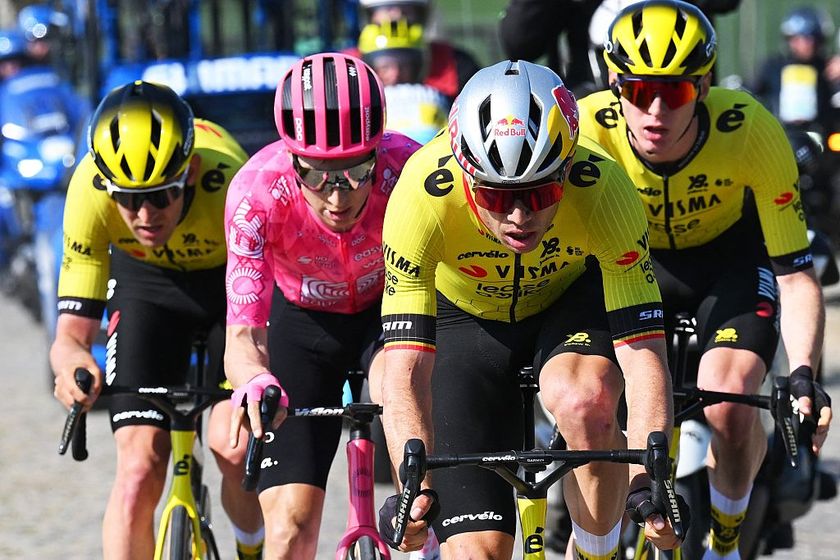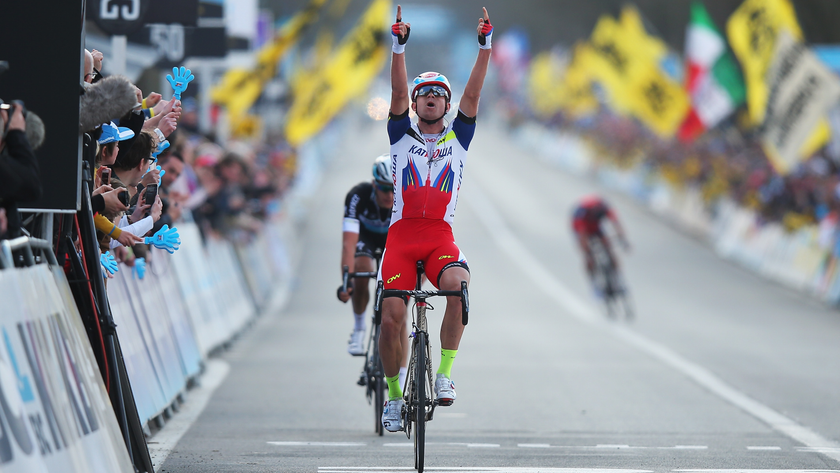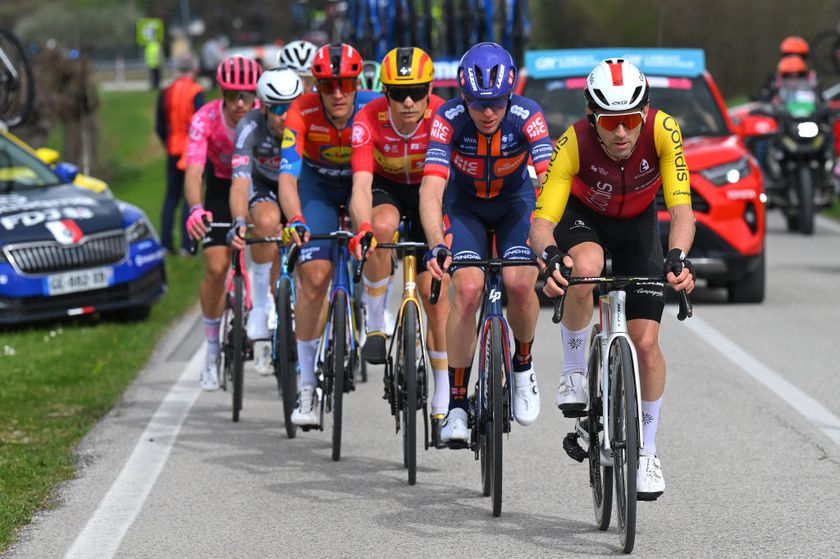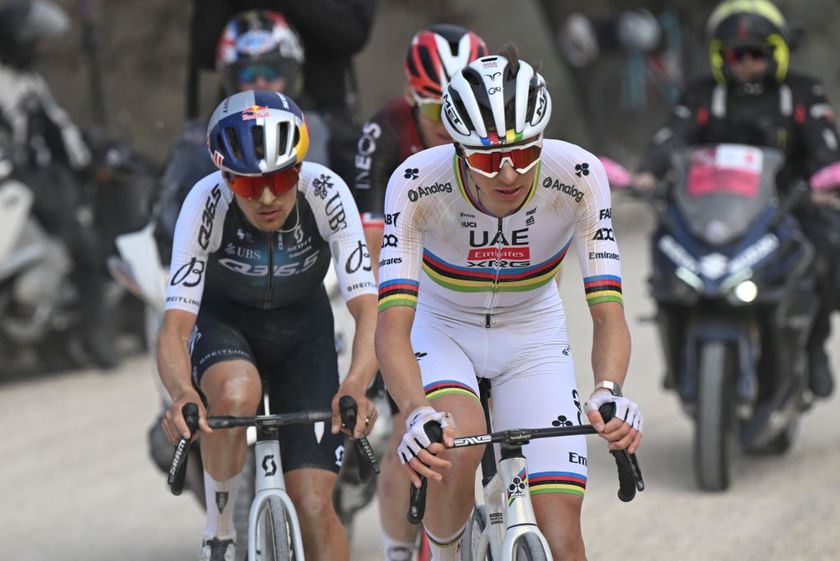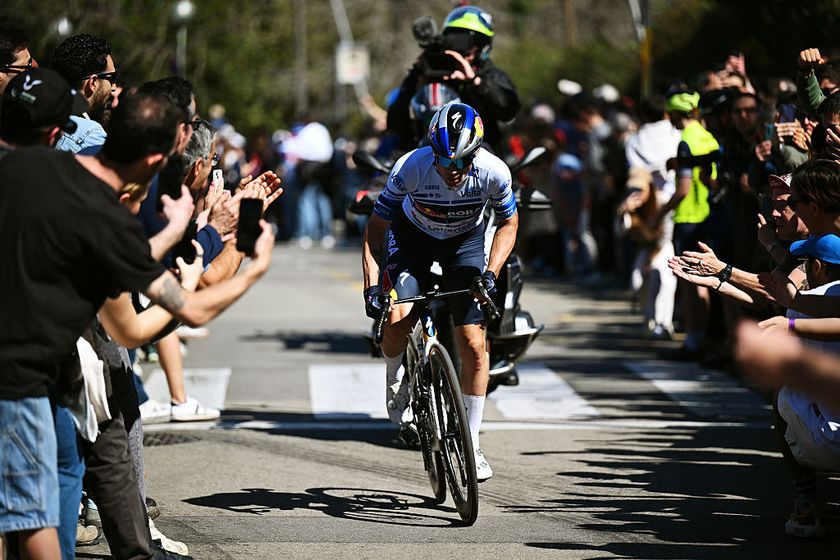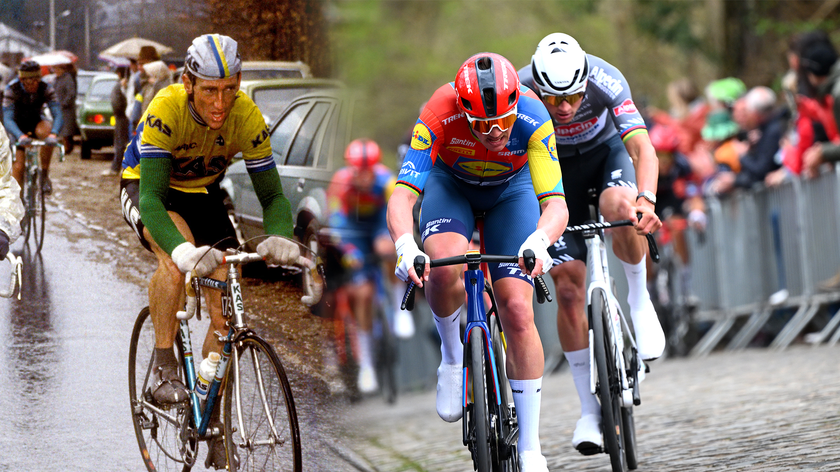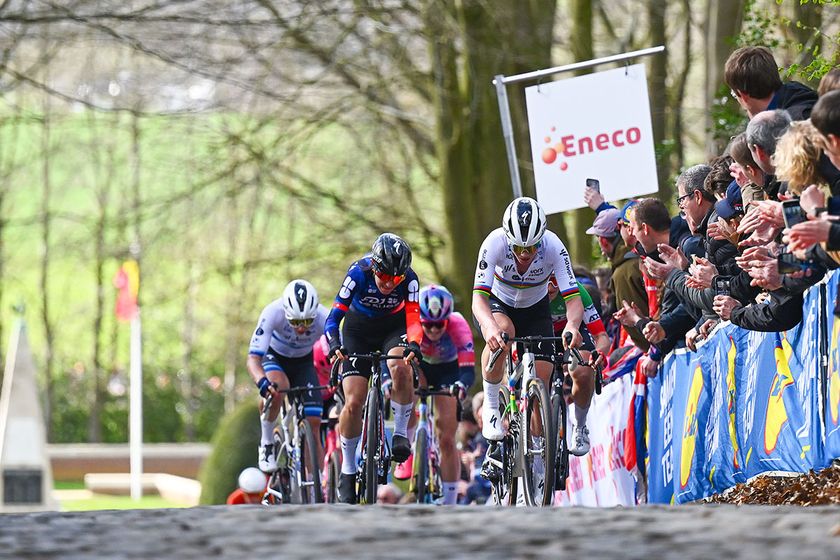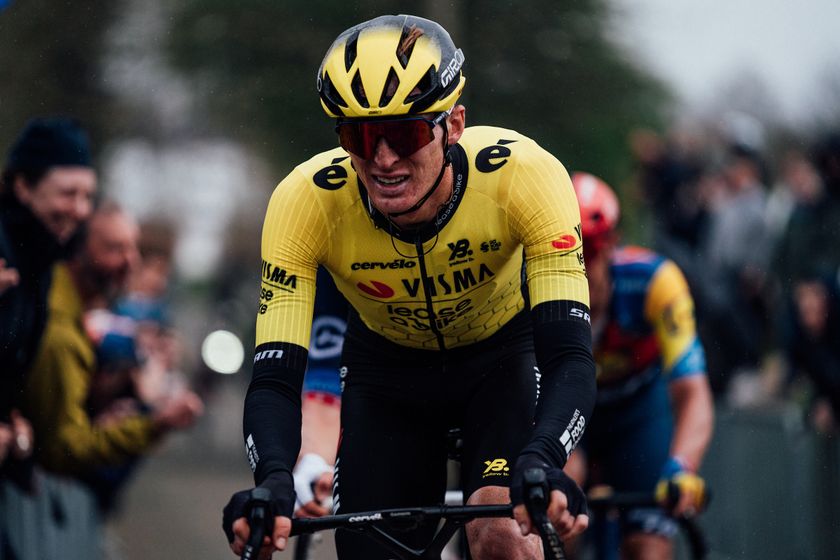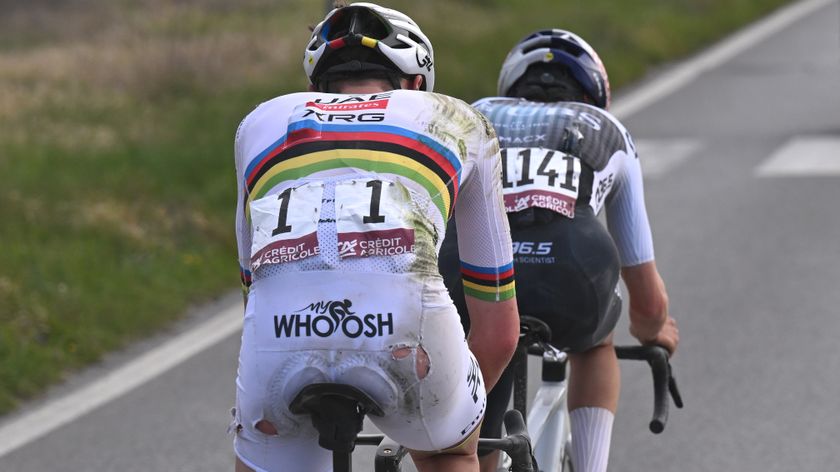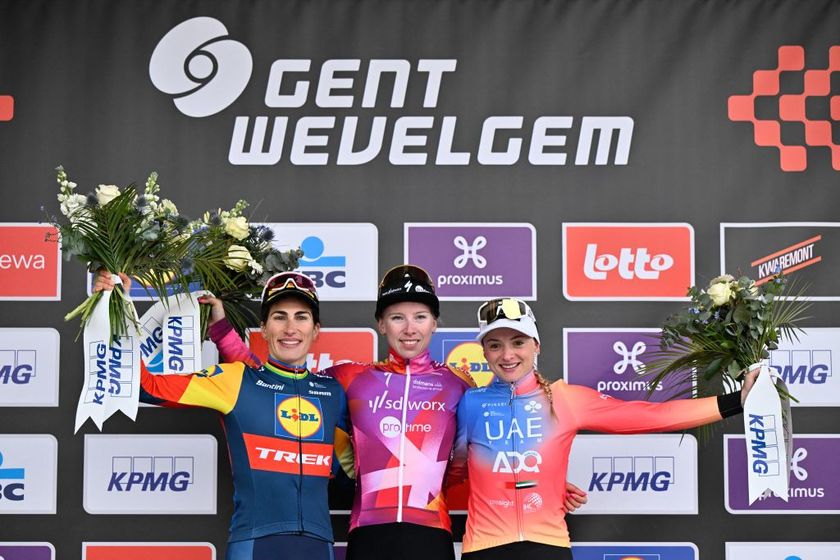Fitness questions and answers for July 10, 2007
Got a question about fitness, training, recovery from injury or a related subject? Drop us a line at...
Form & Fitness Q & A
Got a question about fitness, training, recovery from injury or a related subject? Drop us a line at fitness@cyclingnews.com. Please include as much information about yourself as possible, including your age, sex, and type of racing or riding. Due to the volume of questions we receive, we regret that we are unable to answer them all.
Carrie Cheadle, MA (www.carriecheadle.com) is a Sports Psychology consultant who has dedicated her career to helping athletes of all ages and abilities perform to their potential. Carrie specialises in working with cyclists, in disciplines ranging from track racing to mountain biking. She holds a bachelors degree in Psychology from Sonoma State University as well as a masters degree in Sport Psychology from John F. Kennedy University.
Dave Palese (www.davepalese.com) is a USA Cycling licensed coach and masters' class road racer with 16 years' race experience. He coaches racers and riders of all abilities from his home in southern Maine, USA, where he lives with his wife Sheryl, daughter Molly, and two cats, Miranda and Mu-Mu.
Kelby Bethards, MD received a Bachelor of Science in Electrical Engineering from Iowa State University (1994) before obtaining an M.D. from the University of Iowa College of Medicine in 2000. Has been a racing cyclist 'on and off' for 20 years, and when time allows, he races Cat 3 and 35+. He is a team physician for two local Ft Collins, CO, teams, and currently works Family Practice in multiple settings: rural, urgent care, inpatient and the like.
Fiona Lockhart (www.trainright.com) is a USA Cycling Expert Coach, and holds certifications from USA Weightlifting (Sports Performance Coach), the National Strength and Conditioning Association (Certified Strength and Conditioning Coach), and the National Academy for Sports Nutrition (Primary Sports Nutritionist). She is the Sports Science Editor for Carmichael Training Systems, and has been working in the strength and conditioning and endurance sports fields for over 10 years; she's also a competitive mountain biker.
Eddie Monnier (www.velo-fit.com) is a USA Cycling certified Elite Coach and a Category II racer. He holds undergraduate degrees in anthropology (with departmental honors) and philosophy from Emory University and an MBA from The Wharton School of Business.
Eddie is a proponent of training with power. He coaches cyclists (track, road and mountain bike) of all abilities and with wide ranging goals (with and without power meters). He uses internet tools to coach riders from any geography.
Get The Leadout Newsletter
The latest race content, interviews, features, reviews and expert buying guides, direct to your inbox!
David Fleckenstein, MPT (www.physiopt.com) is a physical therapist practicing in Boise, ID. His clients have included World and U.S. champions, Olympic athletes and numerous professional athletes. He received his B.S. in Biology/Genetics from Penn State and his Master's degree in Physical Therapy from Emory University. He specializes in manual medicine treatment and specific retraining of spine and joint stabilization musculature. He is a former Cat I road racer and Expert mountain biker.
Since 1986 Steve Hogg (www.cyclefitcentre.com) has owned and operated Pedal Pushers, a cycle shop specialising in rider positioning and custom bicycles. In that time he has positioned riders from all cycling disciplines and of all levels of ability with every concievable cycling problem.They include World and National champions at one end of the performance spectrum to amputees and people with disabilities at the other end.
Current riders that Steve has positioned include Davitamon-Lotto's Nick Gates, Discovery's Hayden Roulston, National Road Series champion, Jessica Ridder and National and State Time Trial champion, Peter Milostic.
Pamela Hinton has a bachelor's degree in Molecular Biology and a doctoral degree in Nutritional Sciences, both from the University of Wisconsin-Madison. She did postdoctoral training at Cornell University and is now an assistant professor of Nutritional Sciences at the University of Missouri-Columbia where she studies the effects of iron deficiency on adaptations to endurance training and the consequences of exercise-associated changes in menstrual function on bone health.
Pam was an All-American in track while at the UW. She started cycling competitively in 2003 and is the defending Missouri State Road Champion. Pam writes a nutrition column for Giana Roberge's Team Speed Queen Newsletter.
Dario Fredrick (www.wholeathlete.com) is an exercise physiologist and head coach for Whole Athlete™. He is a former category 1 & semi-pro MTB racer. Dario holds a masters degree in exercise science and a bachelors in sport psychology.
Scott Saifer (www.wenzelcoaching.com) has a Masters Degree in exercise physiology and sports psychology and has personally coached over 300 athletes of all levels in his 10 years of coaching with Wenzel Coaching.
Kendra Wenzel (www.wenzelcoaching.com) is a head coach with Wenzel Coaching with 17 years of racing and coaching experience and is coauthor of the book Bike Racing 101.
Steve Owens (www.coloradopremiertraining.com) is a USA Cycling certified coach, exercise physiologist and owner of Colorado Premier Training. Steve has worked with both the United States Olympic Committee and Guatemalan Olympic Committee as an Exercise Physiologist. He holds a B.S. in Exercise & Sports Science and currently works with multiple national champions, professionals and World Cup level cyclists.
Through his highly customized online training format, Steve and his handpicked team of coaches at Colorado Premier Training work with cyclists and multisport athletes around the world.
Brett Aitken (www.cycle2max.com) is a Sydney Olympic gold medalist. Born in Adelaide, Australia in 1971, Brett got into cycling through the cult sport of cycle speedway before crossing over into road and track racing. Since winning Olympic gold in the Madison with Scott McGrory, Brett has been working on his coaching business and his www.cycle2max.com website.
Richard Stern (www.cyclecoach.com) is Head Coach of Richard Stern Training, a Level 3 Coach with the Association of British Cycling Coaches, a Sports Scientist, and a writer. He has been professionally coaching cyclists and triathletes since 1998 at all levels from professional to recreational. He is a leading expert in coaching with power output and all power meters. Richard has been a competitive cyclist for 20 years
Andy Bloomer (www.cyclecoach.com) is an Associate Coach and sport scientist with Richard Stern Training. He is a member of the Association of British Cycling Coaches (ABCC) and a member of the British Association of Sport and Exercise Sciences (BASES). In his role as Exercise Physiologist at Staffordshire University Sports Performance Centre, he has conducted physiological testing and offered training and coaching advice to athletes from all sports for the past 4 years. Andy has been a competitive cyclist for many years.
Michael Smartt (www.cyclecoach.com) is an Associate Coach with Richard Stern Training. He holds a Masters degree in exercise physiology and is USA Cycling Expert Coach. Michael has been a competitive cyclist for over 10 years and has experience coaching road and off-road cyclists, triathletes and Paralympians.
Kim Morrow (www.elitefitcoach.com) has competed as a Professional Cyclist and Triathlete, is a certified USA Cycling Elite Coach, a 4-time U.S. Masters National Road Race Champion, and a Fitness Professional.
Her coaching group, eliteFITcoach, is based out of the Southeastern United States, although they coach athletes across North America. Kim also owns MyEnduranceCoach.com, a resource for cyclists, multisport athletes & endurance coaches around the globe, specializing in helping cycling and multisport athletes find a coach.
Altitude effects
Cleat positioning across shoe brands
Cycling and prostatitis
Excessive mucous
Heart rate concerns
New shoes, different angled sole
Polymyalgia rheumatica
Sore quads
Prominent veins
Long-term performance suppression
Sciatic gluteal muscle
Altitude effects
I rode in Colorado for seven days, 400+ miles, I am told that will help my blood count/fitness. I am wondering how long the altitude effect will last back here in Missouri, 11,000 feet lower.
Thanks
Greg Wood
Kelby Bethards replies:
That's an interesting question. While you are correct, training at high altitudes will increase your hematocrit (blood count), it does not occur after only one week's time. Generally, your body responds by causing more of a compound called 2,3-DPG to circulate. This compound "allows" oxygen to be released to the tissues easier when in a low oxygen environment. So, for a temporary period of time, you may feel better at low altitude from this, but this will quickly reset when you get back to your home state.
Cleat positioning across shoe brands
Does anyone have a list of shoe brands/models that allow greater rearward cleat positioning?
My pedals are Shimano SPD-SL. I currently use Shimano shoes size 48, and I cannot get the ball of my foot any further than 6mm in front of the centre of the pedal spindle.
I recently (3moths ago) moved my cleats back 6mm after riding for 20 years with the ball of foot directly above the centre of the pedal spindle. I have noticed a minor improvement in the foot/ankle stability in this position and I would like too get my cleats back further, up to another 10mm if possible.
I have an ongoing (past 25 years) right ankle injury that sometimes gives problems, and the recent cleat adjustment did seem to help.
I am 35 year old male, and I race road at local club level competitively.
Cheers,
Kris
Steve Hogg replies:
The brands that allow rearward forefoot cleat position (centre of the ball of the foot in front of the centre pedal axle by 6-15 mm depending on size are: Sidi, DMT, current Time shoes (rebadged DMTs), Nike, Shimano, Diadora, Specialized, Gaerne. They will allow the majority of riders to achieve a modified forefoot cleat position. Of this list, DMT and Nike have the most rearward potential.
Cycling and prostatitis
I am looking for advice so I can get back on the bike. Here is what happened:
I am a 28 year-old male from Costa Rica, 5,9'' at 165 lbs. I train between 12 and 20 hours per week (350-500 kms) with no more than five hours on my MTB, although I have been racing only MTB for the last 2 years.
The terrain in CR is mostly steep climbs everywhere you go (road or MTB). I was using a Fizik Arione saddle on my road bike (past three years) but last week I installed the Specialized Alias (130mm) and I rode for about two hours on it on Saturday.
On Sunday I did a five hour MTB endurance race (regular Bontrager race saddle, I have used it for over two years). On Monday I started feeling pressure and pain in the perineal region but I thought it was regular soreness from the MTB race. Tuesday morning I got ready to train and as soon as I sat on the saddle I felt strong pain in that area. That afternoon I went to the doctor and he diagnosed me with postadinia (prostatitis caused by trauma). He told me to take some antibiotics, to stop training for a month and to consider practicing other sports. All the blood and urine tests were fine, no bacterial prostatitis was evident.
I went for a second opinion and the result was the same although this doctor told me to stay off the bike for three weeks and then I can resume my training. He thinks the prostatitis was caused by the new saddle and not having it in the right angle. Do you have any experience on this matter, could a prostatitis by triggered that fast by a saddle switch with the wrong angle? Do you know how long should I wait before resuming training?
Now I am switching to a Selle SMP Glider on the road bike to relief as much pressure form the prostate and that area in general. I really appreciate any comments, advice, or direction.
Thanks,
Rodrigo Carvajal
Kelby Bethards replies:
So, you are not the only one with this problem. As you can imagine, this can be difficult to take care of and figure out how to fix. Choosing a saddle has always been something I don't like doing either.
Excessive mucous
This may seem like a bizarre question, but here goes. I'm a 28 year-old male roadie. When riding I tend to be one of those guys whose nose gets a bit more runny than normal; however, when racing sometimes the mucous gets so thick I can't breathe right, and occasionally causes me to gag. It does correlate to my effort though. The harder I end up working the runnier it gets in my nostrils, but the thicker it gets in the back of my throat and it feels all sticky and triggers my gag reflex.
I'm curious if there are any ways to fix this? Things like: mouth breathing, nose strips, anti-inflamatories. I've heard people mention a ton of different things, but there has been no consistent advice so I haven't tried anything.
You folk have anything to offer?
Quenton
Kelby Bethards replies:
So, I have the same problem. My buddies joke that I'm going to dehydrate from making too much snot.
Heart rate concerns
I found Scott Saifer's reply to Mr. De La Mora very interesting as I have often worried about this. Probably with better reason as I am 69.
I have always exercised but only been seriously cycling for the past 10 years. My competition consists mostly of 150km plus cyclosportif events including the last seven Etape du Tours.
My height and weight are 172 cm and 65kg. My resting heart rate is 49. I train mostly by myself but ride with a group from time to time. I have been afraid to see what maximum heart rate I could reach and have set an arbitrary limit of 170 for my Polar to notify me.
When I train by myself I seldom reach 170 without feeling I am at close to 100%. Racing or even trying to keep up with someone, I have seen my heart rate go to as high as 185, and feel as if I could hold this, but my fear of overdoing it takes over and I back off.
I have done a couple of stress echocardiograms and all appears to be OK. Do you know if any studies have been done that might give me some guidance on what an old body can do and get away with?
Bill Kinkead
Briantes, France
Scott Saifer replies:
As a matter of legal liability, I have to suggest you check with your doctor first, but if you have been riding for ten years and riding hard routinely without cardiac symptoms, I'd say it would be safe for you to go flat out as hard as you can as long as you can to test for your own maximum heart rate.
New shoes, different angled sole
Thanks for the advice. It was nice to hear from someone who appreciated the same frustration I am having with higher heel lift shoes. I have tried another long ride and still have that same lack of "power transfer" feel, I also feel I am using different leg muscles, maybe that is from trying to ankle more.
I am going to try another ride moving the cleats further back before I finally give up and sell them on eBay. My question is will moving the cleats back cause me any knees problems?
Simon
Steve Hogg replies:
My apologies for the delay in replying. I have been working overseas and am still catching up on emails etc.
Polymyalgia rheumatica
I am a 47 year-old male Cat 4 cyclist in the Cincinnati area. After seeing an ortho for a knee issue, substantial and debilitating pain has developed (and worsened almost daily) over the last four weeks in both shoulders, my lower back, hips and both knees. General daily movement, sleep, etc. has been greatly compromised.
The swelling has not gone away completely in the knee (left) and now my left ankle has some swelling as well. An MRI revealed no structural damage/issues (just overuse ...IT band friction syndrome), but blood tests ordered soon afterwards (due to the pain and lack of swelling reduction) have indicated a very high inflammation in the body due to a high "sed rate". The blood tests have eliminated rheumatoid arthritis, lupus and any infection in the body (good news!) but I am waiting further diagnosis. I am currently taking a prescription anti-inflammatory as well as percoset for pain (it's not helping much!).
I have been referred onward to a rheumatologist for further testing and determination of the source of the inflammation, but will not be seeing that specialist for about two weeks.
Via a little "self-diagnosis" through online sources, one possible result is that I may have polymyalgia rheumatica - an autoimmune response. According the online material, "Polymyalgia rheumatica is usually treated with corticosteroid medicine. This disease usually responds to treatment, with symptoms decreasing within weeks. Medicine may be needed for 1 to 2 years to prevent symptoms from returning".
My question is this: Is anyone on the form & fitness panel (or other sources) aware of any cyclists who have been diagnosed with such and were they able to return to racing again?
Obviously an actual diagnosis would be better to "work with", but as I'm having nothing but time and great deal of pain on my hands for two weeks.
Steve
Kelby Bethards replies:
From everything you've said, PMR (polymyalgia rheumatica) does sound likely. The Rheumatologist obviously will confirm whether this is true or not. I have treated a few people with this, but not athletes. I, personally, don't see why you wouldn't be able to get back to competing. You will need to discuss your exercise regimen with you doctors (particularly the Rheumatologist) as many physicians don't understand what cyclists put them selves through.
Sore quads
After I finished the last of my Paris-Brest-Paris qualifier rides (600 km), I noticed that the muscles on the fronts of my thighs are all very sore, while the muscles on the backs of my legs are hardly sore at all. What does this imply about my bicycle position? (There hasn't been any change in my position; after all my long rides, the same pattern of soreness holds, it's just that after the 600 it is so noticeable that it made me wonder what it implies.)
Current bicycle position: My pubic bone height is about 845mm. With the pedal down, if I measure from the top of the pedal to the top of the saddle where my sit-bones rest, the distance is about 902mm. (If I measure from the center of the BB to the top of the saddle, parallel with the seat tube, the distance is about 718mm.) The saddle is about as far back as it will go on the rails. If I drop a plumb-line from the point on my saddle where my sit-bones rest, it's about 275mm behind the center of the BB. My cleat position is as rearward as it will go without modifying the shoe - I'm intrigued by the arch-cleat idea, but didn't want to change position before a big ride. My reach to the handlebars is consistent with the "balance test," i.e. if I take my hands off the bars then I can easily maintain position without effort.
So why are my quads sore but my hamstrings aren't?
Nick Bull
Steve Hogg replies:
Why are your quads sore? Because you have overused them. Likely possibilities are: 1. If soreness is just above the knee, it may be that your seat is slightly too high.
Prominent veins
I'm a UK 3rd cat road racer and mountain biker. I have a question relating not so much to a specific problem that I have, or at least not yet, but something that intrigues me.
You often see cyclists, particularly I think older ones, with very prominent veins on their legs, particularly on the calf muscles but also sometimes around the front of the shin. See this photo for an example of what I mean, in this case the great Sean Yates' legs.
I have a few questions on this topic:
1. I was wondering whether cyclists really are more prone to either prominent or varicose veins (I am not sure I really understand the difference), or whether it is just that cyclists have their legs on display more often, including shaving them, which makes people notice prominent veins more than other people who keep their legs under wraps?
2. If the former, what exactly causes it? Is it something to do with blood pressure and pedalling/sitting on a saddle for hours on end?
3. Is there any way of reducing the likelihood of this happening?
4. Are there particular types of legs (longer/shorter, more/less powerful, chunkier/thinner) which are more prone to such prominent veins?
Will
London
Kelby Bethards replies:
That picture actually has more than one thing going on. You pose the question of varicose veins. Now, I have not seen or done a formal study on this, but I would tend to believe, having done hundreds of bicycle races and even more hundreds of training rides (I know, not going after a grammar award here, you get me point eh?), that cyclists are not more prone to varicosities.
Long-term performance suppression
I'm a 22 year-old Cat. 1 road cyclist that up until this year has been improving quickly and doing very well, especially in time trials. This is my only third year racing bikes and before that I was a rower for some six years. This season has been super frustrating, as I've been performing worse than last, despite taking a semester off of school to train full time. I was progressing well through the fall but the only pivot point I can seem to recall is that I did a VO2 max test in December and my HR got extremely high, up to 215 bpm. Normally my max is around 202 bpm.
Since then, I've not been able to ride nearly as well as I used to and there have been some non-training related issues that make me think it's not just an issue of how I've been training. I certainly have never felt overtrained, like hating it or being really overly fatigued, it's just kind of like something is weighing me down. My resting HR has never been below 60bpm since December (vs ~45bpm before that) despite taking a couple weeks off of training and resting on a couple occasions to see if I'd recover from whatever is wrong.
I'm really not sure what could be going on, though I seem to remember reading that Damiano Cunego had a problem with Epstein Barr in 2005 and it really slowed him down. I'd admit I was doing higher risk activities during the fall 2006, and I've never had mono before, so maybe this is a possibility. Is there anything else that could be dragging on this long? It's definitely different than a plateau, as I've been considerably slower than last year while training less and also in school. I have a powermeter and can only climb at like 80-90% of what I used to and have a problem of blowing up pretty easily and just having to ride really easy.
Thanks for any help you can offer,
Ryan Morris
Toronto, Canada
Kelby Bethards replies:
Although you are training more and not in school full time, you still could potentially be overtraining. Maybe some of the physiologists can shed some light, but although you rested, you may not have rested enough. But, I would have thought you'd feel somewhat better after a few weeks off.
Sciatic gluteal muscle
I am a 46 year-old male Cat III veteran road rider, focusing on centuries and Gran Fondos. I typically rode between 25-300 miles a week on a five-to-six day moderate regimen prior to feeling chronic pain in my left hamstring and gluteal muscle.
I have had what I believe to be either gluteal sciatic or piriformis muscle syndrome for nearly 10 weeks now. My symptoms are an increasingly painful sensation in my left lower gluteal extending downwards along just left of the center of my hamstring. The pain is debilitating to the point where I cannot ride more than three hours on my long days. Yesterday I had to stop at just 90 minutes after a week off due to an intestinal virus. I had to drop out of the Mountains of Misery century due to the pain.
Although there is a good deal of information on this condition, I have yet to find a resource, including a doctor, who can tell me what my options are to correct this condition. Do I just take time off the bike and continue to perform mild stretching of the muscle and alternately ice/heat the area to promote healing? How do I alleviate pinching/pressure on the sciatic nerve? I'm at a loss and don't want to face limiting my training and cycling to three hours or less.
Richard F. Stewart
Kelby Bethards replies:
This may or may not help. I had problems in the past with sciatica. I essentially did some home physical therapy on it to see if I could make it go away.
